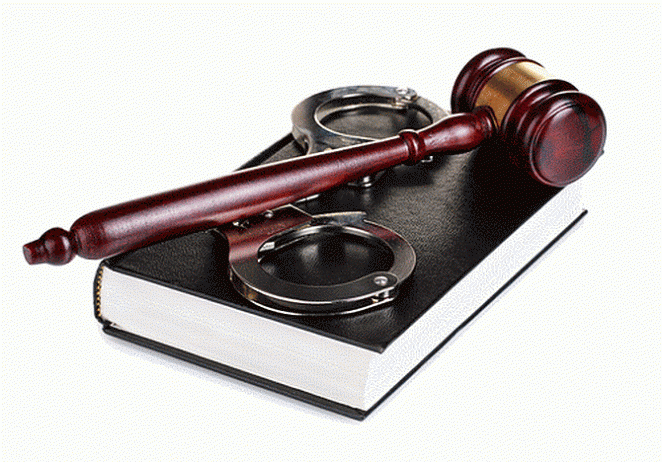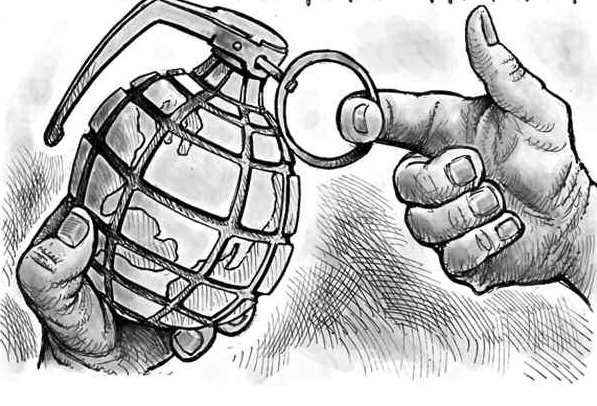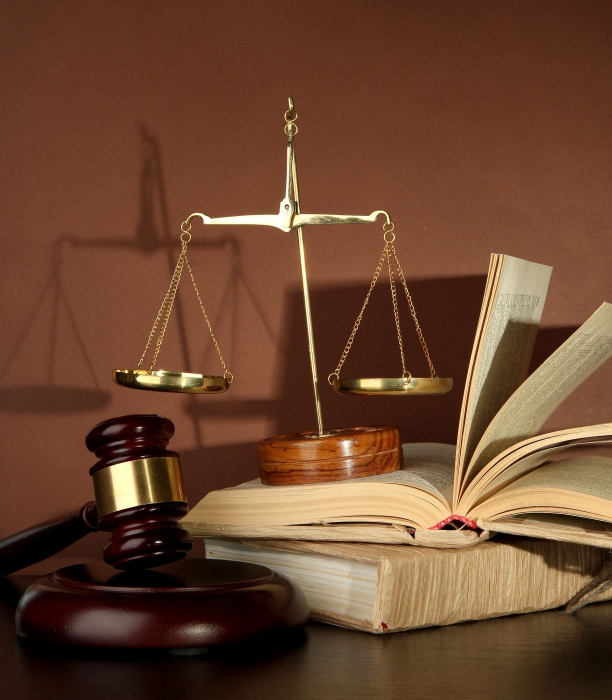How many years of human civilization, perhaps the same number of first criminal acts. In the past centuries, the definition of a crime was considered from different points of view, the same act could be legitimate in relation, for example, to a slave and is absolutely unacceptable and punishable if it is committed against a noble master. Now everything is somewhat different, but in criminal law the questions that investigate the concept and types of crimes, as well as methods for their disclosure and prevention, are still in the first place.

What is a crime?
Crime is considered as a legal category and socio-political. But this does not mean that at all times it was understood only as acts that posed a threat to the economically dominant class. According to sociologists, philosophers and forensic scientists, the social essence is expressed in danger to the living conditions of society, their violation.
The first definition of a crime was enshrined in the French Penal Code of 1810. In it, all unlawful acts were classified into three categories: misconduct, violations and crimes.
In accordance with article 14 of the first part of the modern criminal law of the Russian Federation, a crime constitutes a guilty act that is dangerous for society, which prohibits the Criminal Code of the Russian Federation under the threat of punishment. Types of crimes and punishments are directly related and correspond to the severity of each other.
Action and inaction
The concept of action has two components - action and inaction. The first is expressed in the active form of external behavior. This is a focused process, the ultimate goal of which is to achieve a certain result. Action is always controlled by the consciousness and will of the face. For example, types of crimes such as attempted assault on the lives of law enforcement officials (provided 317th article Criminal Code) or torture of a person (Article 117 Criminal Code of the Russian Federation). In the first case, this is a single act, and in the second, a system of actions.
The main types of criminal offenses can only be committed through active actions (robbery, banditry, theft, rape, etc.). The concept of inaction implies the indifferent behavior of a person, his failure to fulfill certain duties, requirements, which result in consequences that fall under the category of socially dangerous.
Signs of crime
The first place among the signs of a crime is its public danger. By it is commonly understood the ability of an act to harm public relations or put them at risk of its infliction. It is expressed by qualitative and quantitative characteristics. The first is determined by nature - this is a specific, individual category, and different types of crimes differ in it, making up the Special Part of the criminal law. The quantitative component of social danger is characterized by its degree (or measure). This topic is essential in addressing a number of criminal law issues. The degree and level of public danger determine the signs and types of crimes within one group. For example, a murder can be simple or committed in a way dangerous to society (setting fire to a home, damaging the brakes of a car or bus). Types of crime are also identified by the criterion of the level of public danger.
The second important sign is the unlawfulness of the act, that is, the prohibition of the act under the threat of criminal penalties.
The third is guilt or, in other words, the attitude to the crime, its consequences and the likely public danger of the person committing it.
The fourth is punishability, which is inextricably linked with wrongfulness. Only if all four signs are present can one speak of any act as a crime.

Types of Crime
The most common and basic is the classification according to the degree of probable or the onset of public danger, according to it all crimes are divided into four categories:
- Light weight. They include criminal acts (intentional or reckless) for the commission of which imprisonment is prescribed, the maximum term of which is no more than three years.
- Moderate This category includes types of crimes (intentional), the maximum punishment for which is no more than five years, as well as committed by negligence, for which imprisonment is prescribed for a term of more than three years.
- It is customary to classify the third group as deliberate crimes, for which sanctions provide for imprisonment of no more than ten years. They are called grave.
- Particularly severe. They are characterized solely by willfulness and imprisonment for more than 10 years or require even more severe punishment.

Such categorization into types of crimes (RF, CC) committed intentionally or through negligence is essential and is taken into account both in qualifications and in sentencing.
Forensic Classification Basics
In addition to the types of crimes described above, there are other ways to systematize them, for example, forensic classification. For its implementation, a wider range of grounds and criteria is taken as a basis. Several large groups can be distinguished:
- by the method of committing and concealing a crime;
- by subject (group, single, first-time or recidivist, male or female, crimes of minors, military, persons with mental disorders, etc.);
- in accordance with the characteristics of the victims and their behavior (here great importance is given to victimology, or otherwise to the “science of the crime victim”);
- based on the subject and object of the criminal assault (on life and health, property, copyright, etc.).
What is a crime
The term and concept of “composition” is a criminal law category that characterizes certain types of crimes. Also includes a description of its most significant features. The composition gives the law enforcer the opportunity to decide whether an act committed by one person or another can be regarded as a crime, and also helps his competent and proper qualification. As part of the theory of criminal law of the Russian Federation, it is customary to separate such concepts as:
- A specific composition - it is a collection of mandatory legal features that is part of a rule.
- The actual composition - it refers to the signs of a certain act, which was committed in objective reality. The establishment of full correspondence between these two types (actual and concrete) is the essence and basis of the qualification of crimes.
- A general concept is an abstract, detached idea of all the elements of a crime, including signs that are common to them all.
Structure of the crime
In the structure of any composition, elements are distinguished, as well as signs characterizing them. The latter are nothing more than a specific characteristic (legislative) of the most important properties of a crime. They describe the most distinctive features and allow you to separate one composition from another, and also directly depend on what types of crimes are committed.
The composition of absolutely every crime includes four elements and signs that characterize them - this is the subject, object and subjective, objective side. Any criminal act always infringes on the benefits and interests that are protected by the criminal law. They constitute the object of the crime. According to the accepted classification, it can be generic, species, or direct. The signs characterizing him represent the objective side of the crime, which is expressed in its external manifestation. For example, a method, a tool, circumstances of time and place, the relationship between cause and effect.
The subjective side, in turn, reflects signs of guilt (intentionally or recklessly), goals and motives, and sometimes emotional state, that is, affect, when committing a criminal act. The following types of crime are distinguished: general and special. Both the one and the other contain signs of the one who committed the crime. In the first case, this is an individual who has reached the age established by law, and is in a sane state. If, in addition to the general ones, there are also additional features that are mandatory for the composition of a certain crime, then this is a special subject. They are either described in the disposition of the article, or they must be established by interpretation, for example, unlawful acts in military service.
Special types of the subject of crime have certain features that are quite diverse and relate to various personality traits. All of them can be divided into three large groups:
- signs that reflect the role in society and the legal status of the subject (for example, citizenship, position, attitude to military service, ability to work, etc.);
- physical properties (age, state of health, gender);
- the relationship of the subject of the crime with the victim (family, service, etc.).
What are the functions of a crime
Firstly, the concept of composition is of great importance in practice. This is explained by the fact that it is an instrument of knowledge of the truth in a particular criminal case. Moreover, in the course of the criminalization of any act representing a public danger, creating criminal law norms, the legislator simultaneously creates information models of certain elements of a crime. Moreover, in the dispositions of the articles of the Criminal Code of the Russian Federation, he reflects their signs (objective and subjective). Simply put, there is a transition of the act (socially dangerous) to the category of criminally wrongful.
The second function is a diagnostic one, the corpus delicti is the legal basis for qualification. It is understood as establishing correspondence between a criminal act that has already been committed and its description in a specific article of the Criminal Code of the Russian Federation.

It is also worth noting that the investigation of certain types of crimes is also based on basic knowledge about the composition of the act. For example, murders, rape, theft, that is, distinguishable by criminal law.
The delimiting function is that the separation of criminal acts from others that are not such, as well as from similar crimes that differ in level of public danger and severity of punishment, is ensured through an accurate description of the elements of the composition in the disposition of the criminal law.
The fourth function is fundamental. The only required and sufficiently complete reason for bringing a person to criminal liability is the presence in the act committed by him of signs of a certain corpus delicti. And it is not required to establish any additional facts.
In addition, it is worth noting the guarantee function, which guarantees the legality of criminal cases and does not allow the conviction of persons whose actions do not provide evidence of corpus delicti.

Types of crime
The science of criminal law uses various principles to classify the elements of crime. Let's consider each in more detail:
- Three types are usually distinguished depending on the level of public danger. The first is the main one; it does not have aggravating or mitigating circumstances. As a rule, it is reflected in the first part of the articles, for example, in articles 105, 160, 158, etc. The second type is qualified. This is the composition of a specific and specific crime with aggravating circumstances (qualifying signs). For example, the infliction of grievous bodily harm, resulting in death by negligence (Article 111, part 4 of the Criminal Code of the Russian Federation). And the third is a privileged composition, that is, having extenuating circumstances. For example, the 107th article of the Criminal Code of the Russian Federation (murder committed in the state of passion).
- By structure, the compositions can be simple and complex. The first includes a description of the characteristics of any one specific act, which is not complicated by any of its elements. For example, protection against criminal encroachment of property (theft) is the task of the article. 158 of the Criminal Code. She belongs to the category of single-object crimes. Some criminal law provisions are aimed at protecting several objects at the same time from criminal attacks. In this case, a complex structure is implied - this is a very common concept, and the types of crimes that have it most often fall into the category of serious or moderate. For example, robbery, which at the same time encroaches on a person and on property, and therefore refers to two-object criminal acts.
- Based on the legislative structure, the compositions are divided into formal and material. This classification is of great importance in practice, in order to establish for each specific crime the moment of its completion. In formal compositions, the objective side includes only those signs that characterize an action or inaction, the consequences remain beyond its scope. Therefore, the crime is recognized as completed at the time of its commission. For example, insult (Article 130 of the Criminal Code of the Russian Federation) or slander (Article 129 of the Criminal Code of the Russian Federation), etc. With material composition, along with action (inaction), the onset of consequences is included, the absence of which indicates the incompleteness of the crime, and a person can be attracted only for an attempt. For example, murder, fraud or theft, etc. A mixed composition is allowed - formal-material. For example, article 213 of part 1 of the Criminal Code of the Russian Federation establishes liability for hooliganism. It can be accompanied by the use of violent acts against the victim or be combined with damage or destruction of another's property, in this case there will be material composition, if only the threat of violence arises - formal.
Sometimes it happens that the moment the crime ends is transferred to the stage of its preparation (for example, banditry) or attempt (robbery). Such a composition will be called truncated.
In what form is the crime investigated?

The law establishes the following types of crime investigation: inquiry and investigation. Their main difference is the presence or absence of the guilty person and the composition of the criminal offense. The powers of the inquiry bodies include crimes listed in Article 150 of Part 3 of the Code of Criminal Procedure of the Russian Federation and for which there are suspects. In this case, the investigation should be carried out within 20 days, if there are sufficiently good reasons, then the period can be extended by another 10 days. If, for all this time, the suspect has not been identified or he has not been acquainted with the indictment, then the preliminary investigation stage begins. In addition, the inquiry is carried out at the direction of the prosecutor, but only for crimes of medium and low gravity. Preliminary investigation It is conducted for severe and especially severe, as well as for all the compositions specified in article 151 (part 2) of the Code of Criminal Procedure of the Russian Federation.









